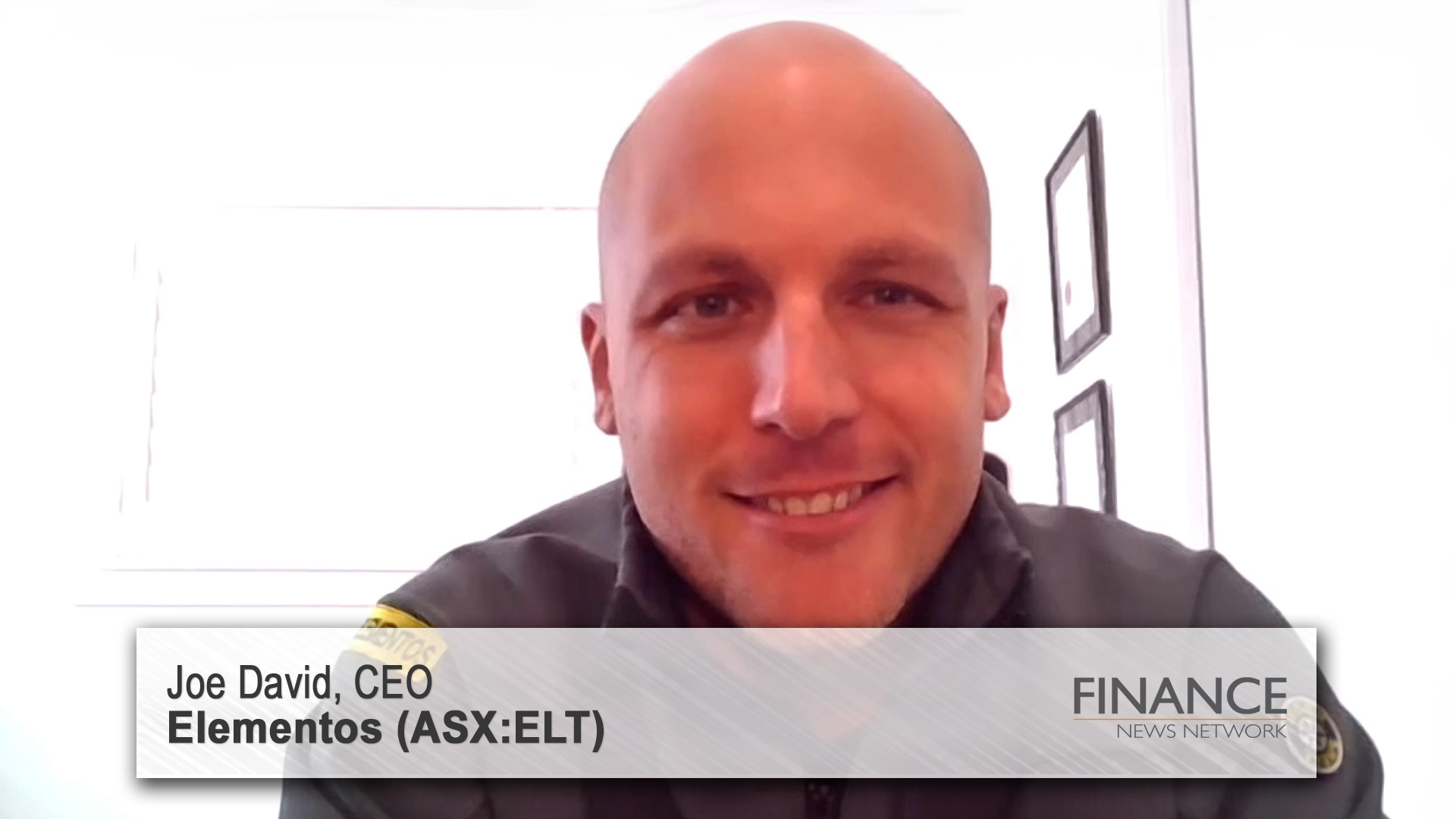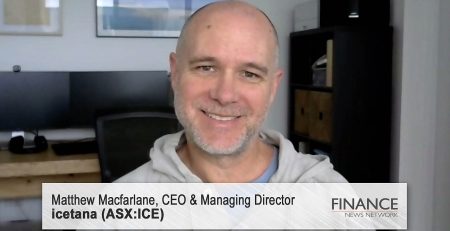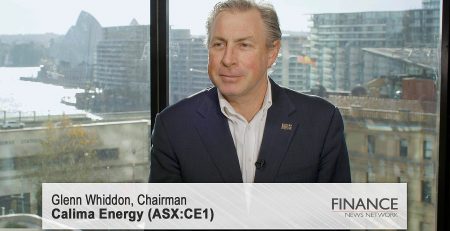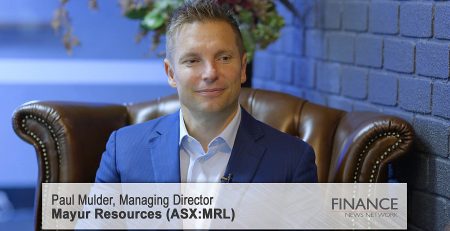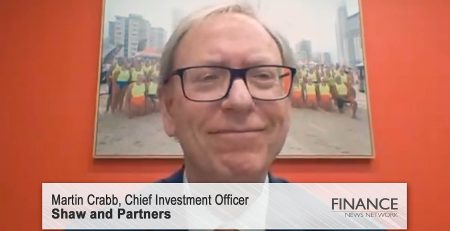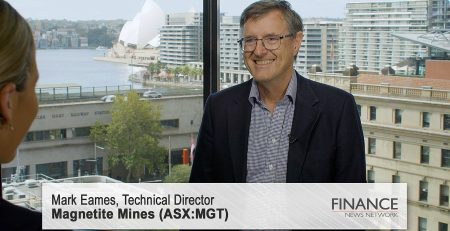Elementos tin and copper exploration breakthroughs
Paul Sanger: I'm Paul Sanger for the Finance News Network and today we're talking with Elementos. Elementos trading under the ASX code ELT with a market capitalization of approximately 35 million is committed to the safe and environmentally-conscious exploration, development and production of its high-grade tin projects. Elementos owns two world-class tin projects with large mineral resource bases and significant exploration potential in mining-friendly jurisdictions. Today, we're pleased to have with us Elementos MD Joe David. Joe, welcome back to the network.
Joe David: Good day, Paul. Always good to be back with you.
Paul Sanger: Let's get straight into it, Joe. The company early released an announcement detailing some further high grade tin and copper intersex at your Tasmanian Cleveland project. Can you tell us about these new results?
Joe David: Yeah, hey, well the published results, it speaks for itself. We've got a meter and a half at 1% tin and interestingly nearly 4%, 3.8% copper at about 350 meters. It does contain a high grade intercept within that, which is 1.9% tin and just under 8% copper. So some pretty high grades of both tin and copper there, which is quite exciting to us.
Again, I'll highlight to everyone, this is opportunistic mineralization we're intersecting. The target with the drill holes being planned for us is still remains below. We're drilling out our tungsten resource and our tungsten expiration target has previously been defined by the company, but what we really want to get a bit more understanding of. So where the drill holes currently at about 650 meters, which is where we are hoping to intersect this tungsten mineralization and I guess we're starting to see the side of the signs that we're hoping to see as we go into that.
So again, these results are great, it's opportunistic. It certainly shows that there is more tin and copper than is currently resourced on the project and from what the geologists currently see, it certainly looks like this tin and copper is representing a new lens or set of mineralization that we previously weren't aware of. So again, a lot of upside here for us.
Paul Sanger: So what I'm hearing here, Joe, is that these results kind of point to a new zone of mineralization, is that right?
Joe David: Yeah, exactly. So we're drilling from the other side of the hill from most of the historic drilling and that was specifically designed to get the right angle as we go down into this tungsten below the defined tin and copper resource. So, because we've drilled from that site, we're drilling through a lot of rock and a lot of ground that hasn't been previously explored. And on our way down, this is our second material intercept that we've now reported to the market, the first one being 9.7% copper with some pretty high grades of gold and silver as well. That was about 111 meters from the surface.
Then we've hit this tin copper intersection at 350 meters. This is much more similar to the mineralization that we have within the rest of the tin copper defined resource, but again, it is a new zone and it's a new bit of mineralization that we previously weren't aware of. And whilst I'm saying it's at 350 meters, critically for us, it's only 150 meters laterally from the old underground workings that exist at Cleveland. So theoretically, the access to this new mineralization area is not an expensive process as appear as coming down from the surface.
Paul Sanger: Sounds very encouraging. And what do these results mean for the ongoing development of the Cleveland project?
Joe David: Yeah, so we're staying on track with the original plan for the drill hop, which is to get down into this tungsten and define that ore body better. But I think what is very clear is what we've always known, but now we can tell the market is, there's a lot of exploration upside for Cleveland in both the tungsten which we're heading for, and the tin copper close to the surface.
So the next thing we'll do on the completion of this hole will be to do some down hole geophysics, down hole EM. That's a very proven technique in these types of mineralizations to define some further targets. So that'll get us sort of a 360 degree reading surrounding the hole and wherever we have some significant sulfide material, we should get back a pretty good signature. Obviously, that signature basically tells us where any follow-up drilling, the direction it should be pointing.
Paul Sanger: I'll take this opportunity to talk a bit about tin. The tin price continues to hit multi-month highs, I think currently trading U.S. $34,500 a ton. What's your take on the current tin price and how does it affect the feasibility and economics of your projects?
Joe David: Well, to be clear, it's a good price. It's a good price for both our projects. If both our projects were producing right now, we believe we'd be highly profitable.
The economics of our Oropesa project in Spain, which as you know is our flagship deposit, all the technical work has been done at about $30,000. So to be getting nearly $5,000 above that if we were producing, is significant. The economics of that project already look good at in and around $30,000. So $35,000, it's fantastic. Same thing down here at Cleveland.
Now, we haven't published any formal studies, so I can't necessarily reference, but this was a project that was operating when tin prices were in the sub $10,000. So now having tin prices up around 35,000 certainly is a good shot in the arm of a feasibility study or a scoping study when we get through to running this down in Cleveland as well so really supportive.
Now the drivers for that, I think the drivers are very clear. The world is struggling to supply enough tin into the market and finally all the data points are starting to align. We've had a few mixed messages between China and the London Metals Exchange, but now, everything's lining up. Both the stockpiles are reducing, both in London Metals Exchange and Shanghai Futures Exchange as well as there being multiple reports of supply challenges coming out of the major producers, the major producers being China itself, which is the major producer of refined tin.
Then you have Myanmar, which is the second-largest miner, and then you have Indonesia, which is the largest exporter. Combine that with some reported conflicts in the eastern side of the DRC where a fair bit of tin comes out of Central Africa, you've got a pretty much a perfect storm to be driving tin price and I think we're seeing the start of what could be quite a substantial run for the tin.
Paul Sanger: So in short, what you're telling me, there is stronger for longer is the way forward for the tin price?
Joe David: Certainly from what the data we're seeing, but I'm no commodity forecaster, but certainly happy with the trend we're currently seeing.
Paul Sanger: Obviously, a lot going on, on both projects. Can you give investors a little insight what to expect over the coming months?
Joe David: Yeah, so at Oropesa where we're fully focused on resubmitting our primary licenses, still on track to be doing that at the end of Q3. We're also pushing forward in delivering the DFS at the end of calendar year 2024.
So Spain, as previously discussed, we've got all the data out of the ground, which is at that approval stage and completing the DFS. So we very much look forward to doing that.
Down in Cleveland, it's sort of a wait and see. We're going to get down to this tungsten. We're very much hoping for some very large intercepts of tungsten down there. And basically when we pull out, as I said, we'll do some geophysics and after that we'll make the decision on the next step whether we go into further exploration down in Cleveland to further define these targets or whether we start pushing that through the study phases. Both exciting on both projects.
Paul Sanger: Joe David, many thanks for your time. It's been a pleasure as always.
Joe David: Thanks Paul, appreciate it.
Paul Sanger: Have a great day.
Ends
Copyright 2024 – Finance News Network
Source: Finance News Network

